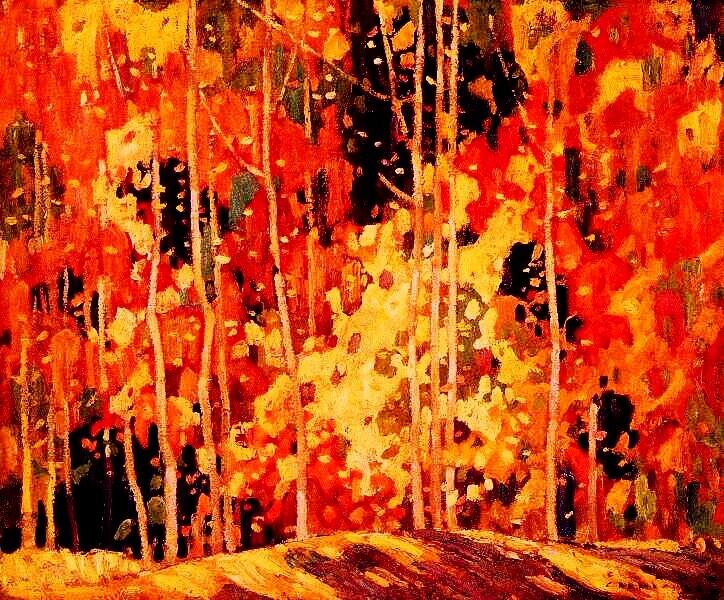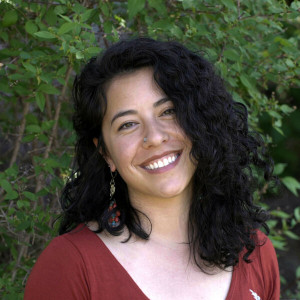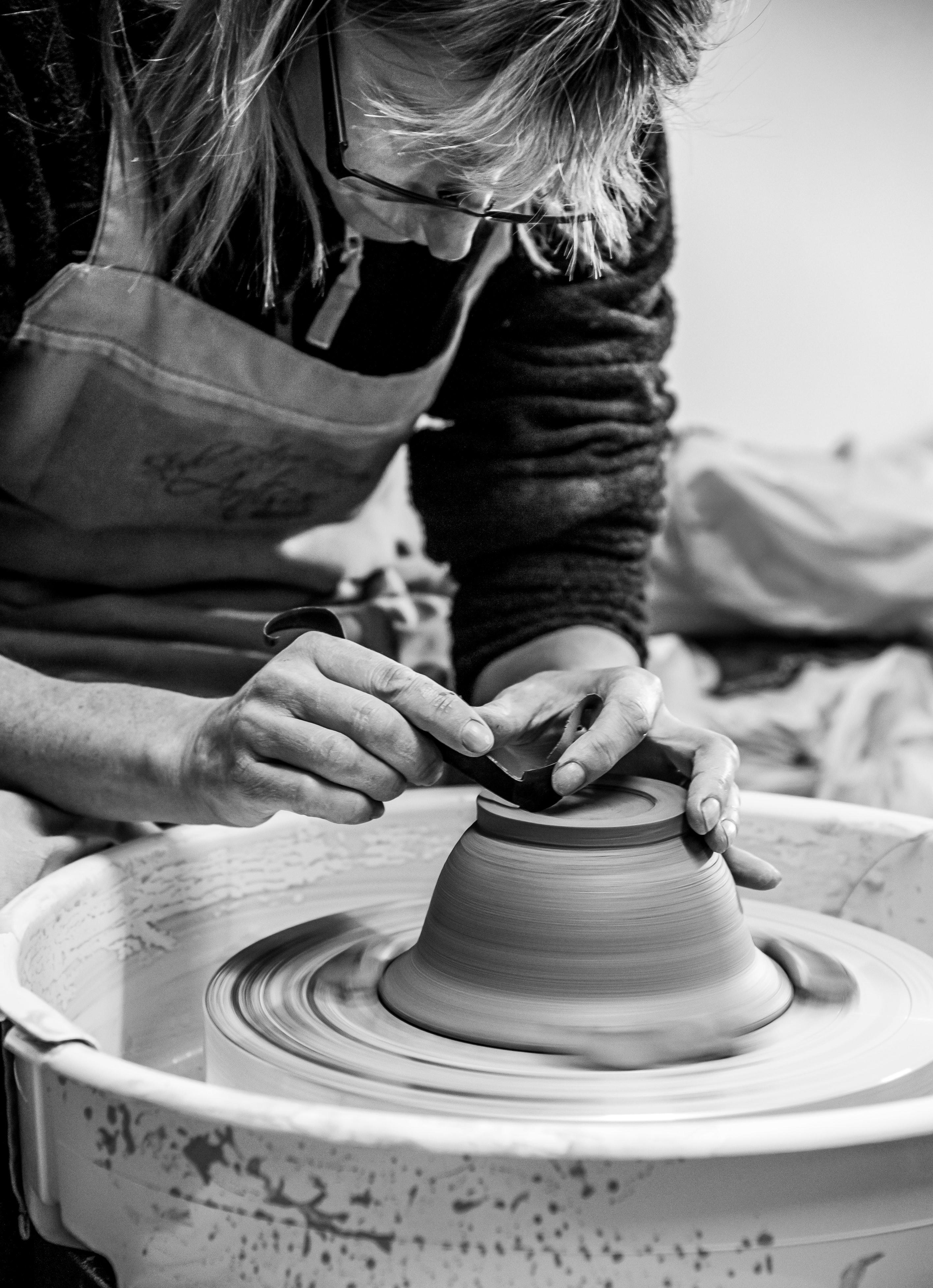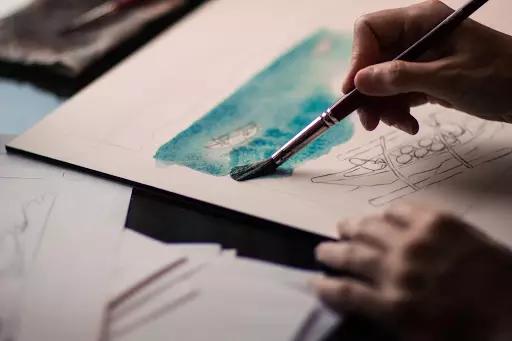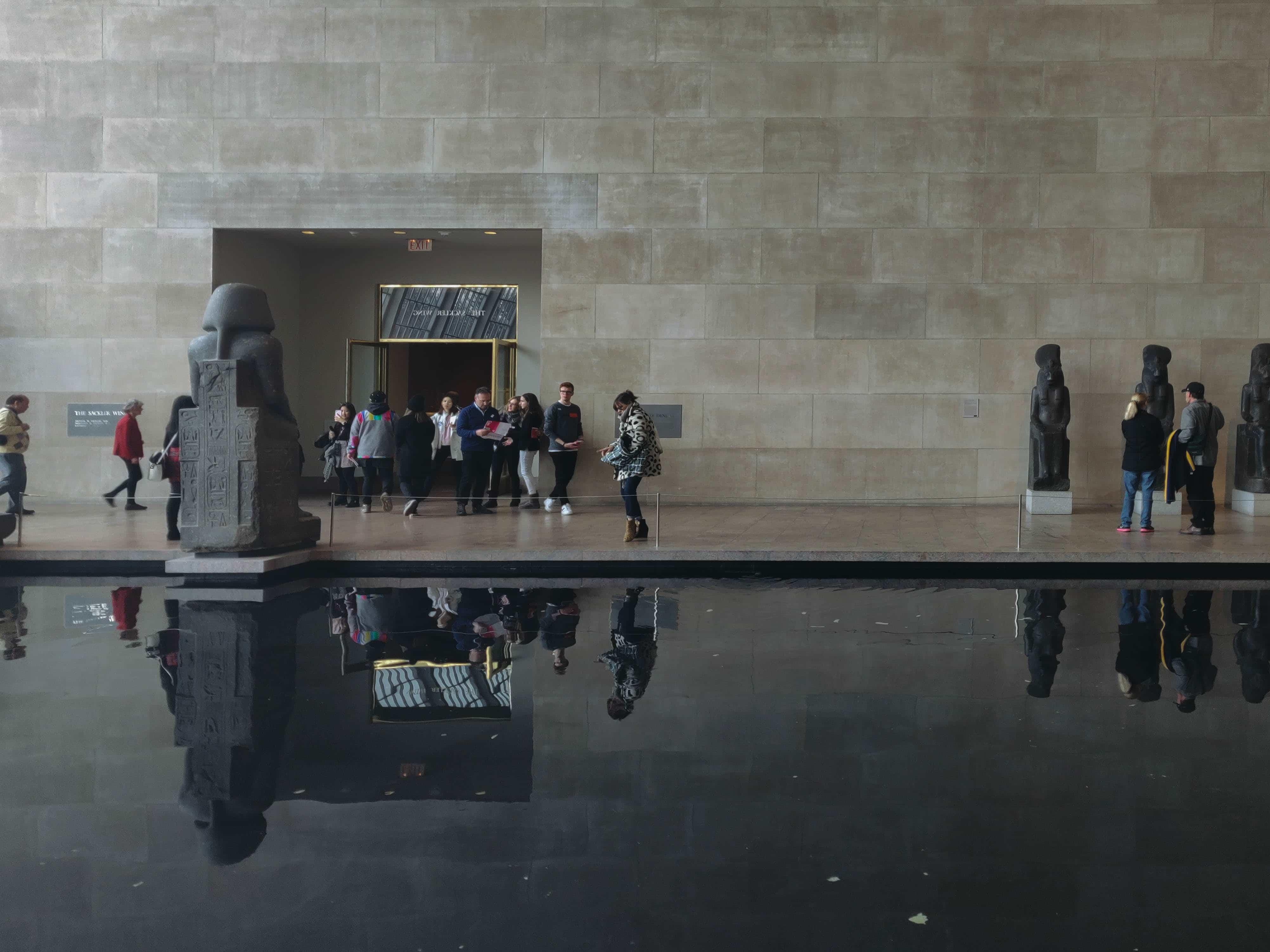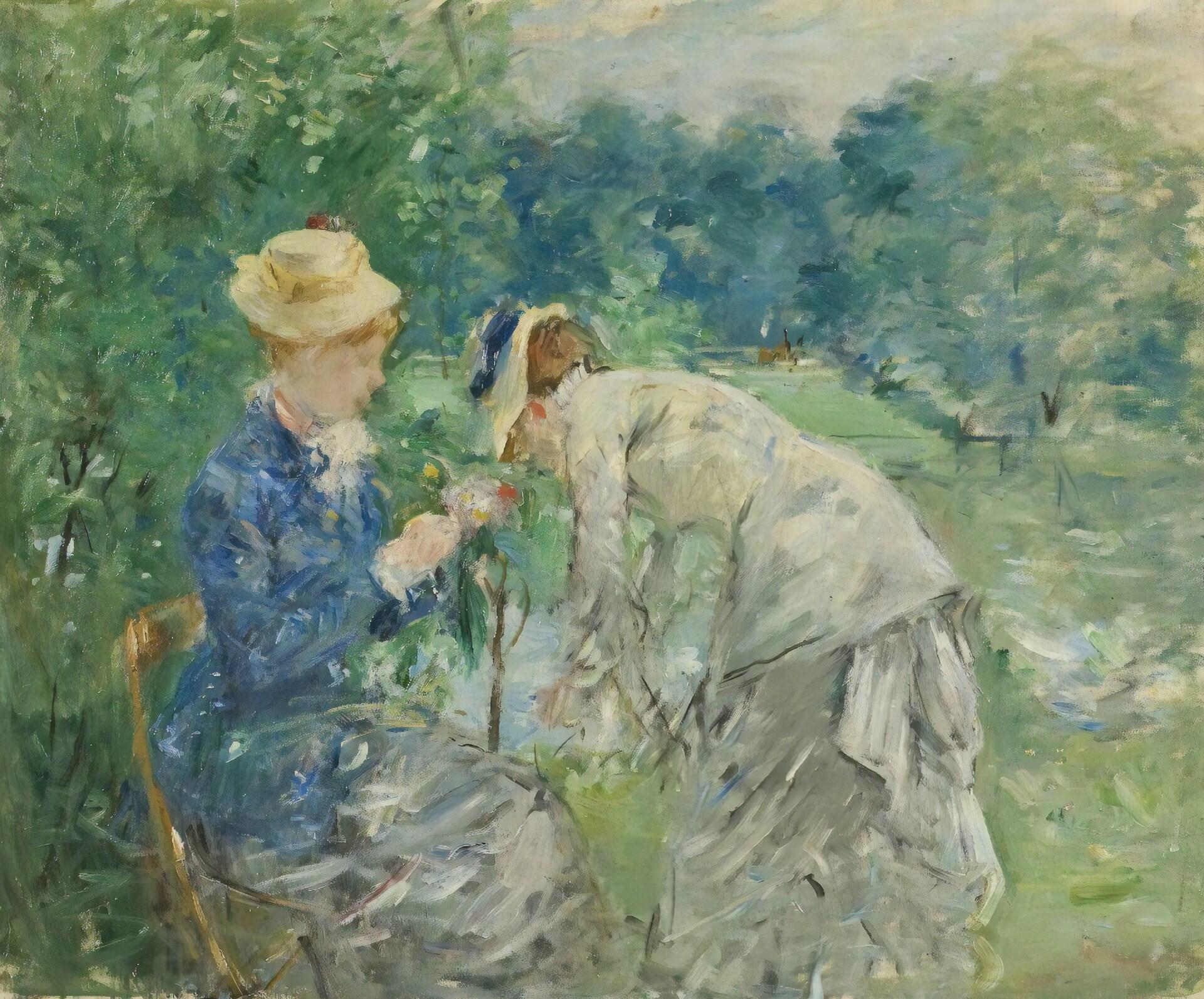Key Takeaways
- The Group of Seven's Legacy: Formed in 1920, the Group of Seven revolutionized Canadian art by focusing on bold, expressive portrayals of the Canadian landscape, moving away from European traditions and establishing a uniquely Canadian aesthetic.
- Emily Carr's Influence: Though not officially part of the Group, Emily Carr's work, deeply influenced by Indigenous culture and British Columbia's landscapes, complements the Group's vision and bridges the gap to modern Canadian art movements.
- Tom Thomson's Impact: A major influence on the Group, Thomson’s iconic works, like The Jack Pine, celebrated the natural beauty of Ontario, particularly through his time spent in Algonquin Park, before his untimely death in 1917.
- Exploring Canadian Art: Visiting galleries, studying artworks, or even traveling to locations painted by the Group of Seven provides an immersive way to appreciate Canadian art. For hands-on learning, private art lessons offer personalized guidance in developing one's own artistic practice.
Canada is known for its vast expanses of natural beauty, in some areas completely untouched and remote. It should come as no surprise, then, that Canadian art is largely centered on the country's natural landscapes.
Our art is founded on a long and growing love and understanding of the North in an ever clearer experience of oneness with the informing spirit of the whole land and a strange brooding sense of Mother Nature
Lawren Harris on the Group of Seven
Few artists capture Canada quite like the Group of Seven. Formed in 1920, the Group of Seven started a cultural revolution in the art world, in which a uniquely Canadian aesthetic had yet to be seen. Focusing primarily on natural landscapes, the body of work produced by Group of Seven artists continue to be celebrated today in art galleries all across the country and beyond.
If you are curious about Canadian art and perhaps even want to study art history or start painting landscapes yourself, you have come to the right place. Throughout this article, we will explore some of the biggest names in Canadian art from the Group of Seven movement: Emily Carr, Lawren Harris, Tom Thomson, and Franklin Carmichael.
We will explore their lives and careers, and take a closer look at some of their most famous paintings and the landscapes that inspired them.
Emily Carr was a Canadian artist and writer known for her depictions of British Columbia's landscapes and Indigenous cultures.
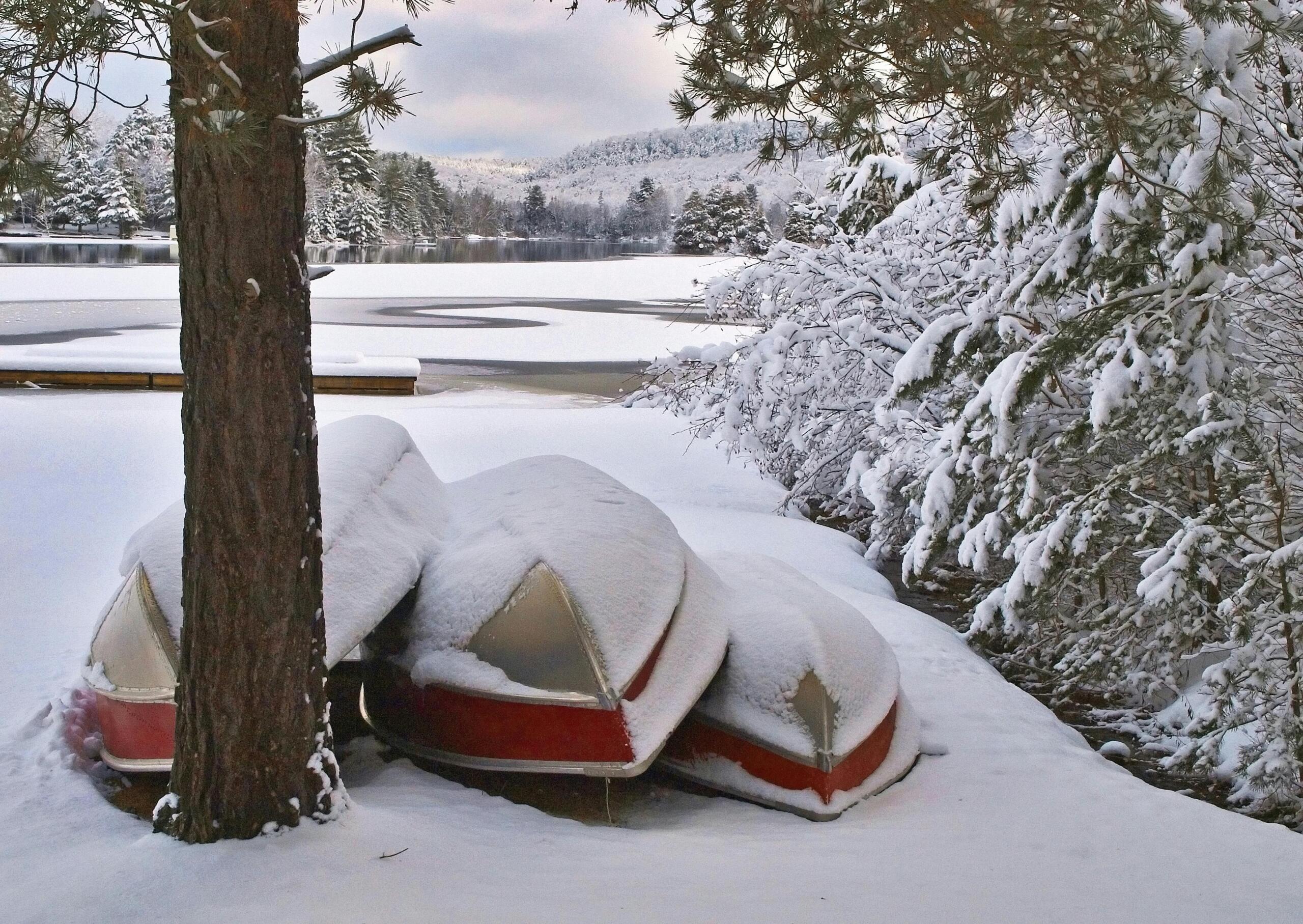

The Group of Seven: Most Famous Canadian Painters
The Group of Seven was a group of Canadian artists formed in 1920, whose goal was to develop a uniquely Canadian style of landscape painting. The Group of Seven's style was characterized by bold colors, dynamic compositions, and an expressive and spiritual portrayal of the Canadian wilderness. They moved away from European artistic traditions to capture a uniquely modern vision of Canada.
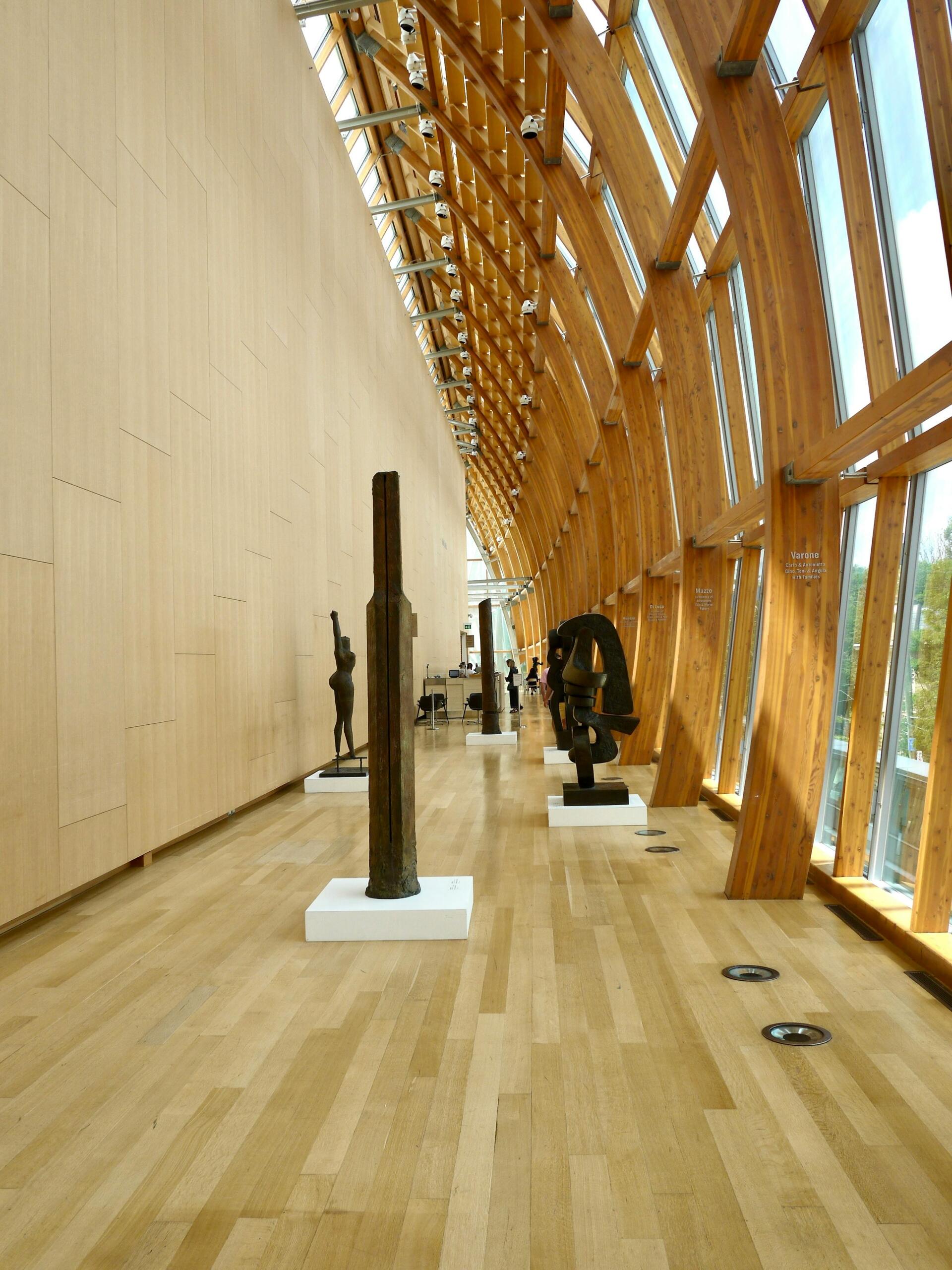
The original members of the Group of Seven are:
- Frederick Varley.
- Franklin Carmichael
- Lawren Harris
- A.Y. Jackson
- Arthur Lismer
- J.E.H. MacDonald
- F.H. Johnston
In later years, painters A.J. Casson, Edwin Holgate, and L.L. FitzGerald joined the group. Iconic Canadian painters like Emily Carr and Tom Thomson, who we will learn more about in this article, had strong associations and connections with the Group of Seven, though they were not actually part of the group.
Though met with criticism initially, the Group of Seven eventually became known as pioneers of Canadian art.
Lawren Harris was a founding member of the Group of Seven and a key figure in shaping Canadian landscape painting.
Group of Seven: A Timeline
1911
An Idea is Born
J.E.H. MacDonald and Lawren Harris start collaborating about the idea of a uniquely Canadian art movement.
1913
Inspiration
MacDonald and Harris travel to the Albright Gallery in Buffalo, New York, to see Scandinavian art - which influences their artistic direction.
1917
Death of Tom Thomson
Tom Thomson, a major inspiration for the artists, tragically drowns in Algonquin Park.
1920
Formation
The Group of Seven officially forms and holds its first exhibition at the Art Gallery of Toronto (now the Art Gallery of Ontario).
1924
Alberta Travels
The Group of Seven travels to the Canadian Rockies, further expanding their artistic vision.
1933
Moving On
Group of Seven formally disbands, leading to the formation of the Canadian Group of Painters.
Emily Carr - One of the Most Famous Canadian Artists
One of the first Canadian artists to incorporate modernist and post-expressionist style in her work.
Born into a family with 9 siblings, Carr's parents were British immigrants that died of tuberculosis when she was just a teenager. After attending the California School of Design in San Francisco, returned home and took up painting and teaching art to children.
Carr travelled to Europe multiple times to learn painting, and even studied privately with British Artist Harry Gibb. She became fascinated with cubism and fauvism, and developed her own unique style.
Influence of Indigenous Culture on Carr's Work
A look at Carr's work in galleries like the National Gallery of Canada shows the strong influence of Indigenous culture in her painting. She was fascinated with the longhouses, totem poles, and masks she saw in her home province of British Columbia. Like many at the time, Carr shared the attitude that Indigenous culture was diminishing as a result of colonization.
in 1912, she made a six week trip to the Queen Charlotte Islands, known today as Haida Gwaii and Seena River. She documented the art of the Haida, Gitksan, and Tsimshian peoples. Eventually, this trip would form the foundation for some of her greatest work on the distinct landscape and cultures of Canada's West Coast.
Tom Thomson was a Canadian painter whose work heavily influenced the formation of the Group of Seven.
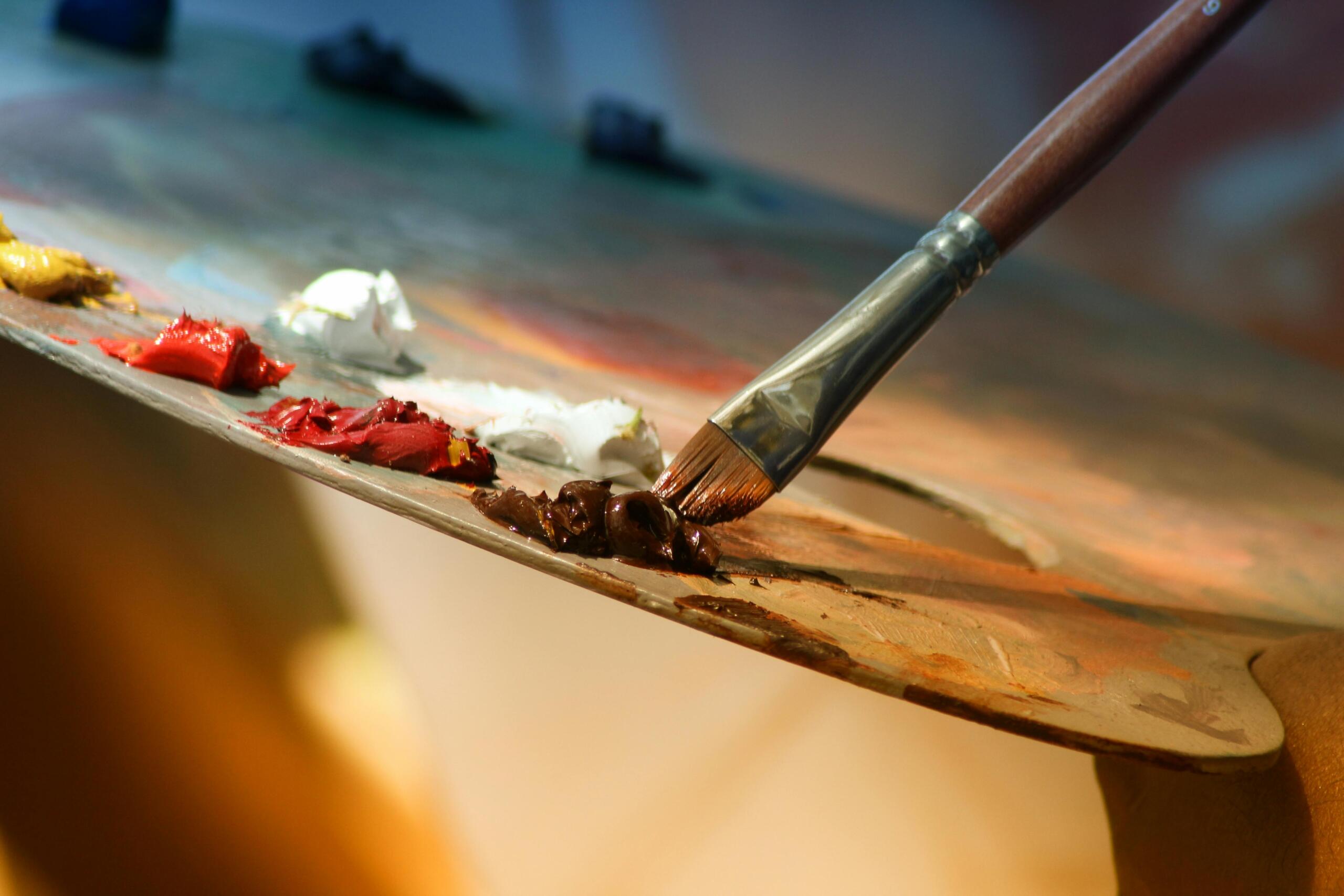
Emily Carr and the Group of Seven
Though she was not an official member of the Group of Seven, Carr shared the collective's artistic vision and shared a strong artistic relationship with Lawren Harris. She was moved by his spiritual approach to landscape paintings.
The Most Famous Emily Carr Paintings
Her work, focused on Canada's West Coast, complemented the Group of Seven's interpretations of eastern and central Canada. Her work bridges the gap between the Group of Seven and later Canadian modernist movements.
Top Canadian Artists: Lawren Harris
Born in Brantford, Ontario in 1885, Lawren Harris became known as being a founding member of the Group of Seven. He has influenced generations of Canadian painters and helped to define a 20th century Canadian fine art aesthetic.
Born in to an affluent home, Harris grew up in privilege and often enabled the Group of Seven's artistry with his wealth and influence. His family's successful farm machinery business eventually became one of the largest agricultural firms in the British Empire.
Harris attended the University of Toronto and studied art in Europe. Upon his return to Canada, he started sketching beautiful places in Ontario, such as the Laurentians and Haliburton. He even painted houses in downtown Toronto, and is known for his depictions of the then impoverished "Ward" community.
Harris befriended artists J.E.H. MacDonald and Tom Thomson in Toronto, who would also contribute to the Group of Seven's legacy.
Founding the Group of Seven
Harris and MacDonald attended an exhibition of Scandinavian art in Buffalo, New York in 1913: a visit that would strongly impact Canada's art scene. They were inspired by the depictions of nature in the gallery, and strongly believed that Canada needed a national art movement.
Harris formed the Group of Seven in the 1920s, and collectively they painted their interpretations of Canadian natural landscapes, like Algonquin Park, Georgian Bay, Algoma, and the Canadian Rockies. Harris' paintings, Above Lake Superior (1920) and Maligne Lake (1924), are among his most famous.
In 1913, Harris and MacDonald were inspired by an exhibition of Scandinavian art at the Albright Art Gallery in Buffalo, New York.
Art is long. Life is short. A picture can become for us a highway between a particular thing and a universal feeling.
Lawren Harris
Harris was known for reducing the shapes of mountains, shorelines, trees, lakes, and clouds to their essential forms, creating austere and striking landscapes. He delved deeply into abstract art, and explored connections between abstraction, nature, and spirituality and became an artist in residence at the prestigious Dartmouth College in New Hampshire.
The Most Notable Lawren Harris Paintings
Franklin Carmichael was a founding member of the Group of Seven and was known for his vibrant depictions of the Canadian landscape.

Tom Thomson: One of the Most Famous Canadian Painters
Tom Thomson was born on August 5, 1877 in Claremont, Ontario, a farming community just Northeast of Toronto. His family later moved to the area of Owen Sound, where Thomson grew up wandering in forests near his home.
He moved to Chatham, Ontario to attend Canada Business College, but quit school to move to the Pacific Northwest to join his brother and worked briefly as a hotel elevator operator. In the Northwest, Thomson gained employment as a pen artist, draftsman, and etcher at an engraving firm. He produced business cards, brochures, and posters for clients.
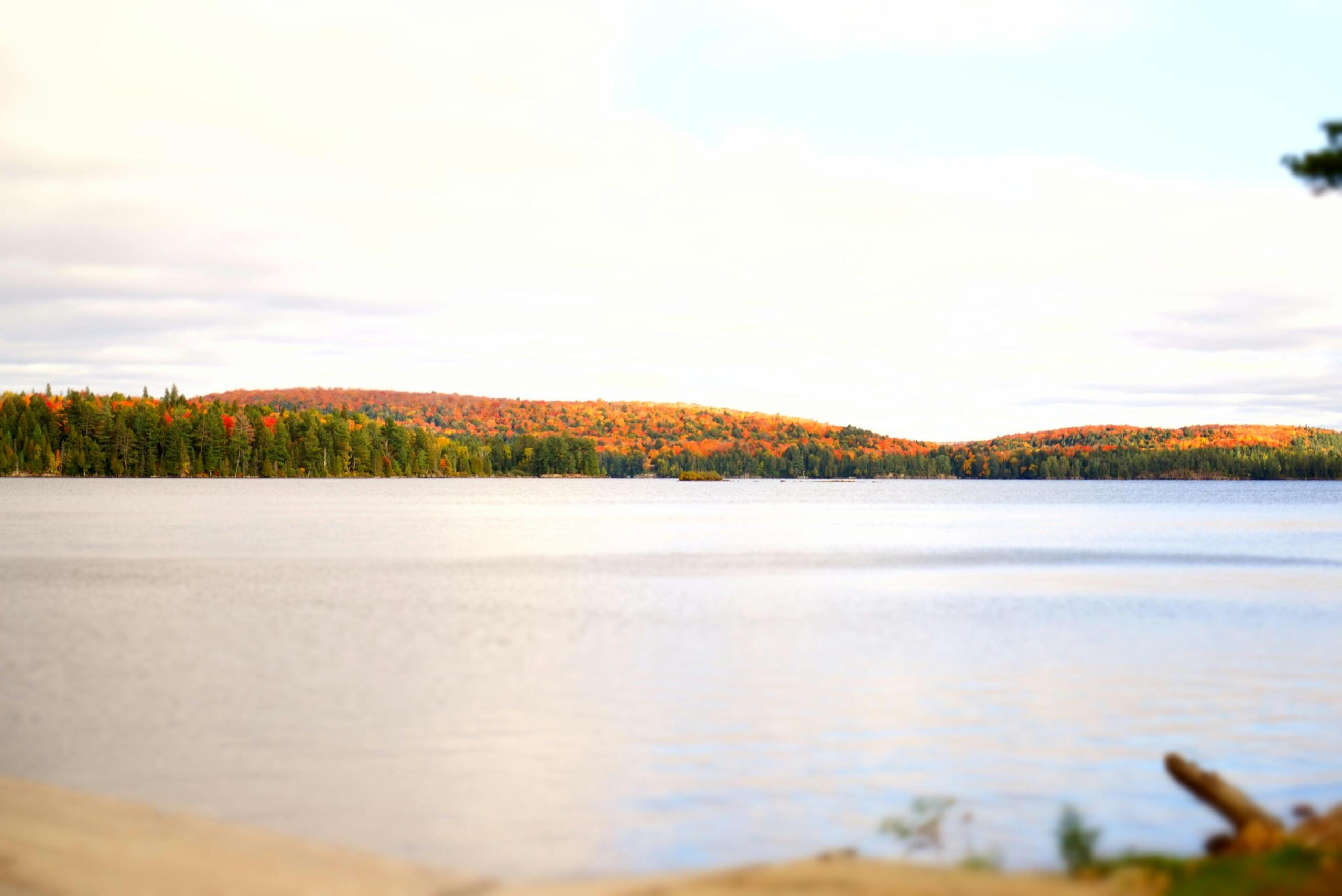
Thomson moved to Toronto by 1905, and was hired at a photo-engraving firm. He took art classes at night with William Cruikshank, who taught painting at the Central Ontario School of Art. By 1909, Thomson was working at Grip Limited, Toronto’s leading commercial art and engraving firm.
At Grip, Thomson met Group of Seven artist J.E.H. MacDonald, who eventually connected him with Lawren Harris, who was a prominent figure in the local arts scene. They would congregate with other artists at the Arts and Letters club, a meeting place and eatery for men interested in literature, theatre, architecture, and art.
Thomson's Quick Rise to Fame
In 1912 Thomson started visiting Algonquin Park to go canoeing and sketching. The park, filled with forests, lakes, rivers, trails, and beautiful views, provided the inspiration for so much of Thomson’s work.
Works like “Drowned Land” show the rapid progress Thomson was making as an artist at the time. He was introduced to Dr. James MacCallum, a University of Toronto professor, who was particularly interested in art. MacCallum recognized Thomson’s talent and covered his expenses for a year as a full time painter.
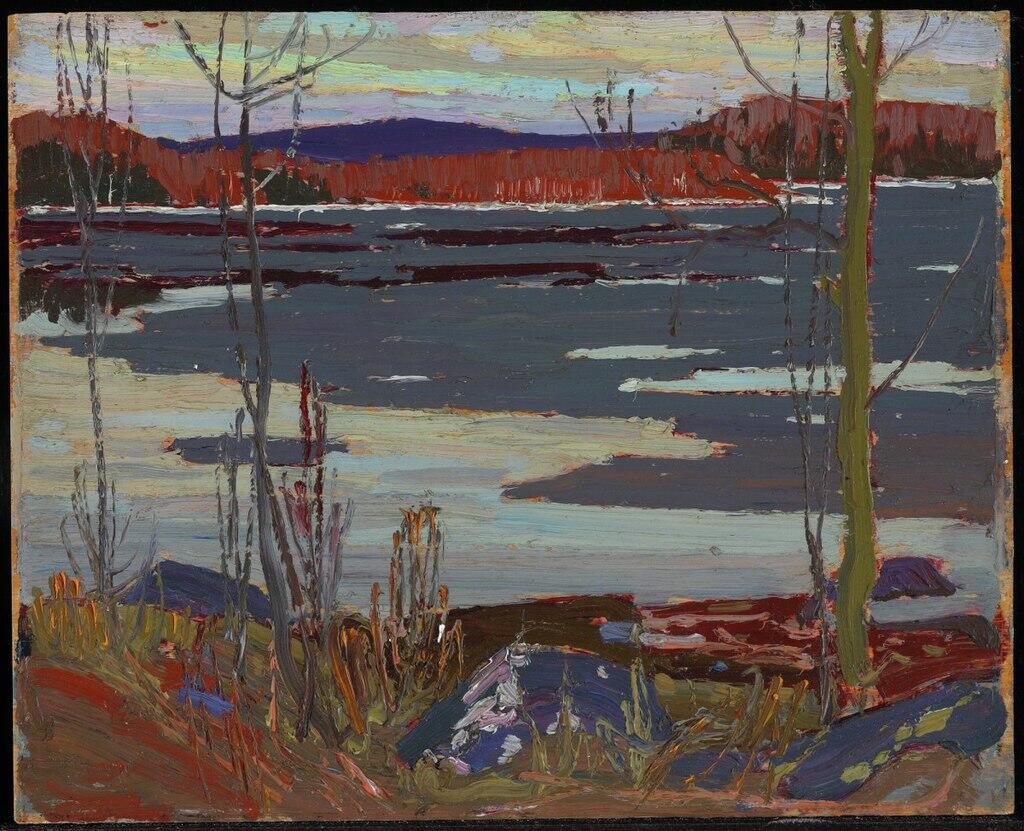
Thomson accepted MacCallum’s offer and dedicated his life to full time painting, spending most of his year in Algonquin Park and the colder winter months in Toronto. By 1914, Thomson’s career took a major turn, and the National Gallery of Canada in Ottawa started acquiring Thomson’s work. The recognition was not common for an emerging artist.
I'll stick to painting as long as I can.
Tom Thomson
After several years of long trips to Algonquin Park, Thomson had created a significant body of paintings. On July 18, 1917, he set out in a canoe a final time. His body was found in Canoe Lake, 8 days later. The official cause of death was accidental drowning, though a 4-inch cut on Thomson’s head was noted.
Most Famous Tom Thomson Paintings
Canadian Painter Franklin Carmichael
Like Thomson and Harris, painter Franklin Carmichael hails from Ontario. Born in the town of Orillia in 1890, Carmichael showed interest in art at an early age, and worked in his father's carriage shop as a teenager decorating carriages.
He studied painting and design in Toronto at the Ontario College of Art (now Ontario College of Art and Design, or OCAD), and worked at Grip Ltd. Design firm alongside other Group of Seven J.E.H. MacDonald and Tom Thomson. He spent a year studying in Europe and returned to Ontario at the start of World War 1. Carmichael lived in the Group's famed Studio Building and even shared a living space with Tom Thomson.
Group of Seven
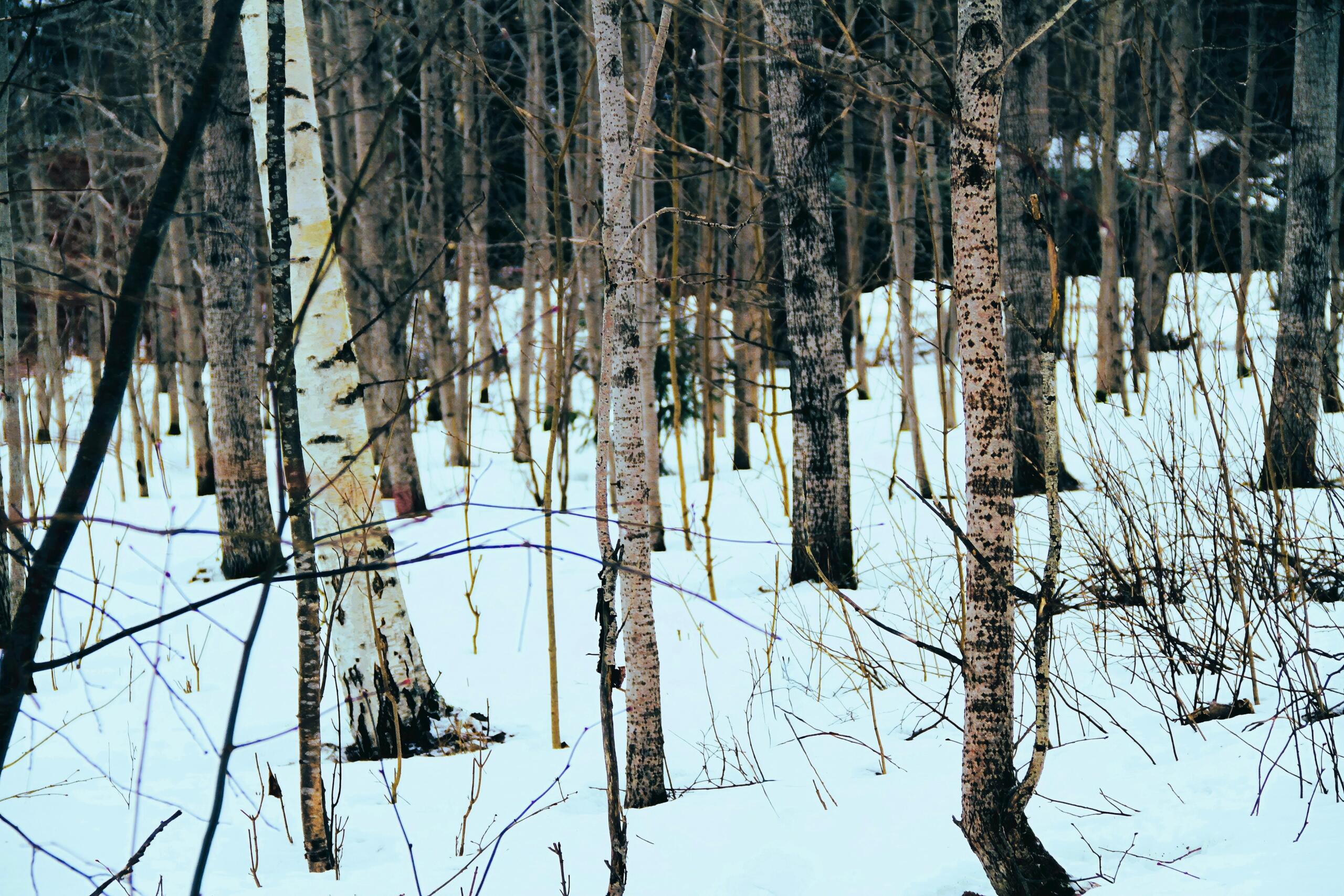
1920 marked the formation of the Group of Seven, and Carmichael counted himself among this group of creative elites. Unlike other Group of Seven painters, Carmichael's work had a more refined quality. True to his birthplace, he fondly painted the hills and forests of Ontario in the La Cloche Mountains and Georgian Bay area.
Carmichael was the youngest member of the Group of Seven, and reportedly remained on the fringes of the group. He was a strong proponent of theosophy, and sought to represent spirituality in his work. Later in life, he would team up with former Group of Even members to form the Canadian Group of Painters.
Carmichael also worked as an educator, teaching at the Ontario College of Art from 1932-1945 as Head of Graphic and Commercial Art. He deeply loved Canada's natural landscape, and became one of the country's top watercolor painters despite having started in oil painting. Through watercolors, he was able to skillfuly depict light, atmosphere, and texture.
Most Famous Franklin Carmichael Art
How Can I Study Great Canadian Artists?
Studying art and art history continues to be a popular program for university and college students, and even those who are particularly fond of art. Of course, you don't need to sign up for a master's program to explore your interest in artists like the Group of Seven. Here are a few fun ways to learn art in Canada.
Visit an Art Gallery
If you happen to live in a city with a public art gallery or have plans to visit cultural hubs like Ottawa, Vancouver, or Toronto, make sure to set aside some time to immerse yourself in the local art scene. Spending a day exploring art can be a truly enriching experience, whether you're a long-time art lover or a first-time visitor.
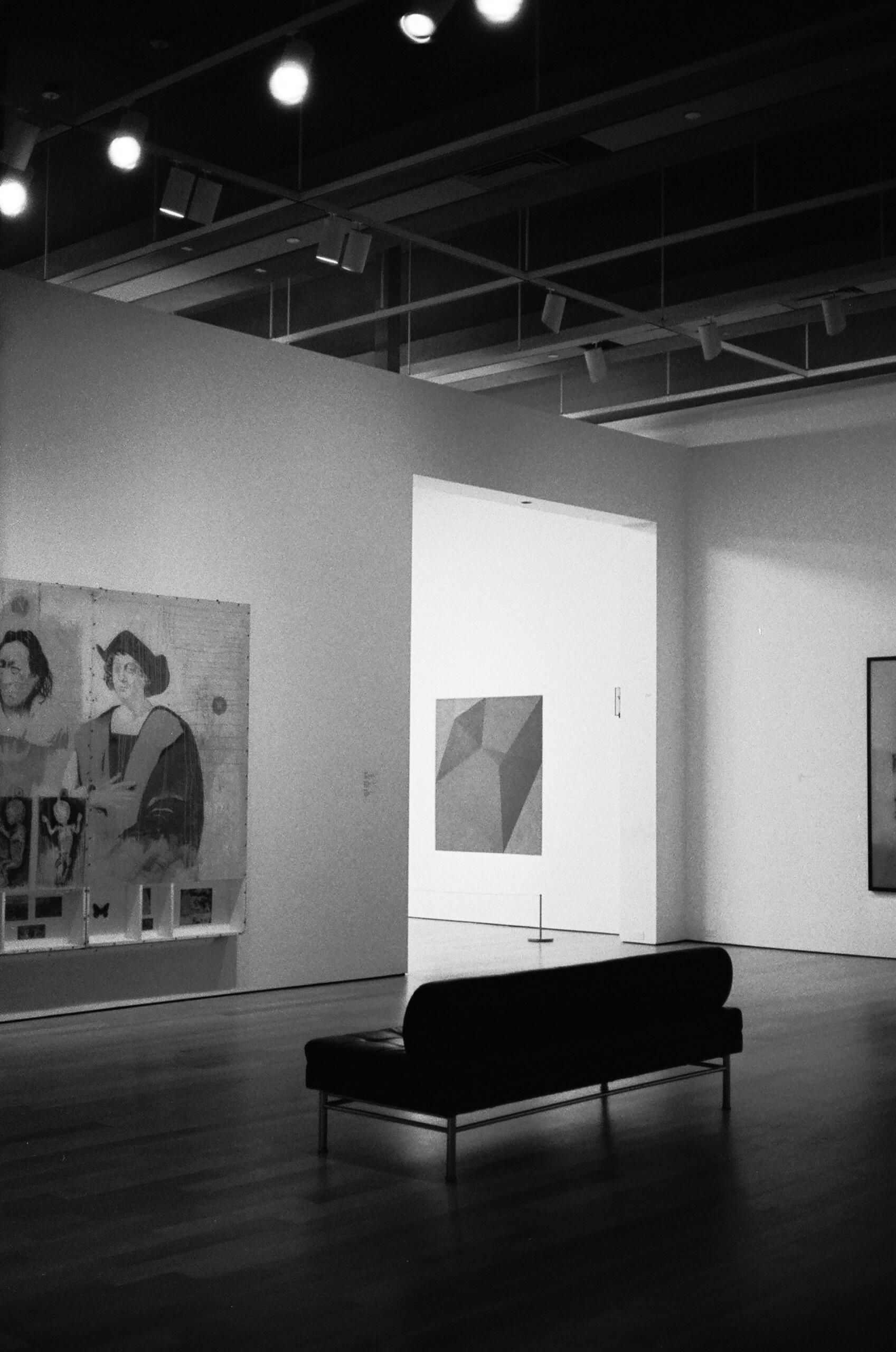
For example, the Art Gallery of Ontario offers an impressive and comprehensive collection of original Group of Seven paintings, providing you with the rare opportunity to appreciate their vibrant use of color and unique brushstrokes up close. These masterpieces are not only beautiful but also serve as a testament to the distinctive techniques and emotions conveyed by the artists. As you walk through the gallery, you’ll find yourself connecting with the art in a way that is simply impossible through reproductions or photos, truly enhancing your appreciation for Canadian art history.
Here is a list of some other galleries you can check out Group of Seven, Tom Thomson, and Emily Carr paintings.
- National Gallery of Canada (Ottawa)
- McMichael Canadian Art Collection (Kleinburg, Ontario)
- Tom Thomson Art Gallery (Owen Sound, Ontario)
- Art Gallery of Sudbury (Sudbury, Ontario)
- Vancouver Art Gallery (Vancouver)
- Royal BC Museum (Victoria, BC)
- Art Gallery of Greater Victoria (Victoria, BC)
Consume media about Artists you Love
With so many modes of learning - books, articles, blogs, videos - it can be so easy to learn with a few taps on your phone. There is plenty of biographical content and analyses of paintings you can find easily online, which is an easy way to learn.
Sick of the screen? High quality coffee table books with prints of famous artwork are beautiful to have in your home and fabulous to explore on a cozy day indoors. Purchase one at a used or local bookstore, or borrow one from your local library.
Visit Group of Seven Locations
Take your learning to the next level by visiting a location that your favorite Canadian landscape artist has painted. If you happen to live in Ontario, the options for Group of Seven are plentiful, especially in beautiful Algonquin Park.
Spending time in the same places as your favorite artists can be a great way to plan an enriching travel experience. Bring your own paints and sketchbook and create your own masterpiece.
Take Up Painting
Do you prefer a more hands-on approach to art than studying art history? Explore your creativity by learning to paint like the greatest Canadian artists.
Whether your goal is to create beautiful masterpieces that you can proudly display in your home or to work towards developing a serious and evolving art practice, there are few things more rewarding than the process of creating your own art. The sense of accomplishment and personal fulfillment that comes from expressing yourself through your own creations is truly unmatched, whether you're painting, drawing, sculpting, or experimenting with any other medium.

Source: Andrea Picquadio.
What is the Best Way to Learn Painting?
Painting is an incredible pastime that can bring you closer to nature and inner peace. And while it would be great to take a brush to a canvas and generate spectacular art like the Group of Seven, the reality is that it takes practice, patience, and skill with the medium.
While you can find plenty of how-to videos, group painting classes, and art studios, people that have very little time to invest in taking courses may find it hard to commit to learning. Luckily, you can easily find private art instructors on Superprof.
A private art teacher can help you master the style and medium your wish to learn, so you can focus on your personal creative goals. They can work with you on your schedule, and you can take as few or as many classes as you wish.
Find a fine art teacher on Superprof today!
Conclusion
The Group of Seven is celebrated for developing the Canadian arts scene and a distinct national style that captured the landscape of Canada. Their legacy continues as they helped to shape the perception of Canada's vast and varied terrains.
While not official members, Emily Carr and Tom Thomson remain inextricably linked to the Group of Seven and both artists made an indelible mark on Canadian culture. Their depictions of British Columbia and Ontario are honored by art enthusiasts in Canada and around the world.

